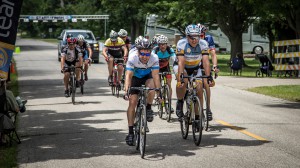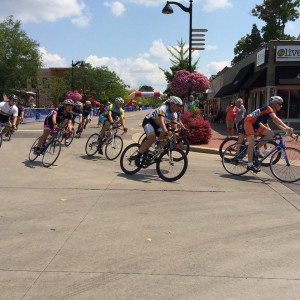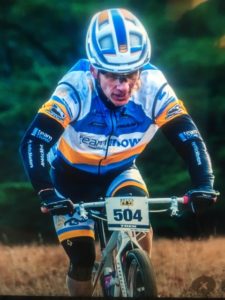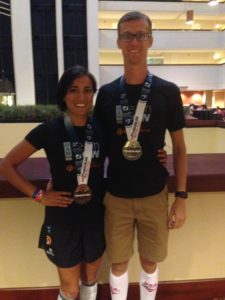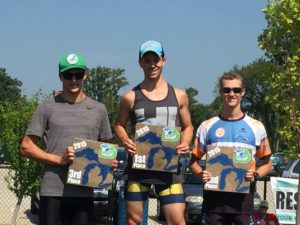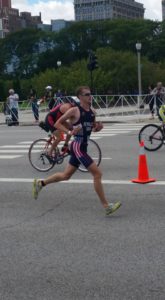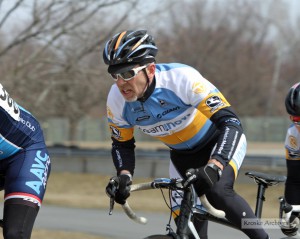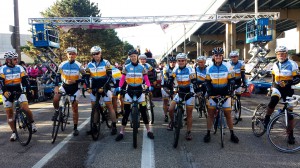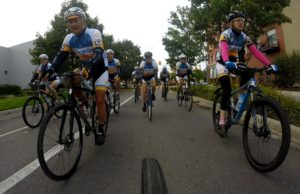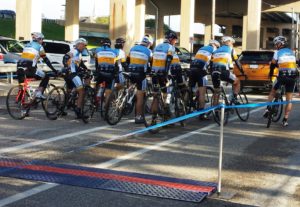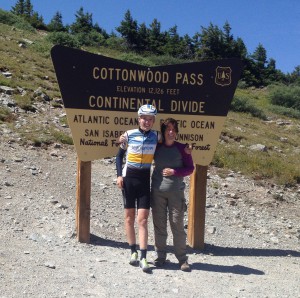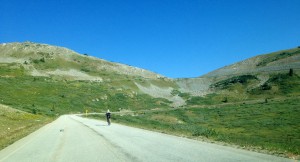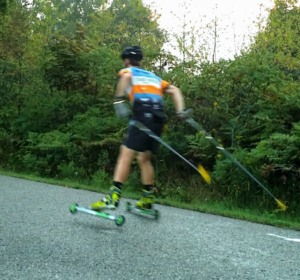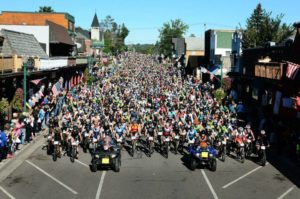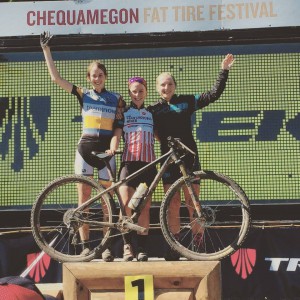By Kaitlyn Patterson, Team OAM Now Multi-sport Athlete
This spring if anyone had told me that in six months I would be one of the fastest mountain bike riders in the Midwest and a dark horse contender at Iceman, I never would have believed them. This season still seems a bit surreal as I managed to defy anyone’s expectations, especially my own.
It is often said that there is more to learn when you lose than when you win. Although I was able to enjoy a fair share of winning this season, the year was not without lessons, and I believe I learned something valuable every race.
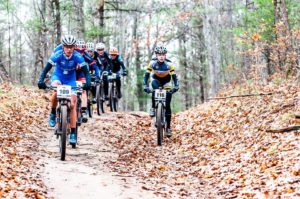 Race smart
Race smart
This is a cardinal rule of road racing, but is sometimes underappreciated in cross-country events. However, with my favorite races being fast, open, point-to-point events, making good decisions and thinking fast are crucial. The biggest thing I learned about winning races is to either make decisive moves or conserve energy, nothing in between. As the miles ticked down at Ore to Shore and Mindy and I battled for the win, I couldn’t think of anywhere I could make a decisive enough move to get away, especially with net elevation loss and a group of guys fully capable of bridging me back. Although I was not confident in my sprinting ability, I waited on her wheel until the final stretch and squeaked out the win.
I knew Iceman would be my greatest test of racing smart as the field was extremely talented and experienced. With the course conditions lightning fast, the race turned tactical after a lead group of five of us got away from the field ten miles in, including decorated riders Chloe Woodruff, Georgia Gould, Katerina Nash, and Erin Huck. Nobody was keen on pulling, so I led more than I should have, but this also allowed me to lead through the singletrack sections (my weakness) to avoid having to chase back on. Despite multiple attacks on the group, nobody was able to split it up, and it looked like the podium would be determined in the finish venue. I figured if we all entered Timber Ridge together, I would likely take fifth as I didn’t have as strong of skills or explosive power as the others. Instead, I decided to play my card on the final sustained climb leading to Madeline’s trail. Unfortunately, the move was not strong enough and too early and the group easily responded. We hit the base of woodchip hill together just before entering Timber Ridge and I saw what a truly definitive attack really was as Chloe and Georgia powered away. With no matches left, I couldn’t respond to anything and took 5th. I was thrilled to be able to be a contender in a world class field and learned from racing with the best.
Be aware of race dynamics
An important part of smart racing is to be aware of the external factors that will shape the race dynamics. The biggest part of this is knowing how the format of the race start will influence the dynamics of the women’s race. In large mass start events like Ore to Shore or Cheq 40, it is crucial to be strong and assertive at the start to get in a fast group of guys. This pays dividends to be able to draft instead of chasing throughout the race. Although huge mass starts make me nervous, I found that focus can bring calm and confidence. Keying on an experienced female racer’s wheel at Ore to Shore helped me to block out the surrounding chaos and set me up for a great race. However, at Cheq 40, fending off panic in the opening rollout cost me the opportunity to race in a faster group and contend for the win.
Many races use wave start formats with relatively short intervals between waves. Here, it was important to know if there will be a faster guy’s race catching my field that would pull my race back together or allow me an opportunity to catch a faster wheel. Being aware of these dynamics were important to my wins at Arcadia Grit and Gravel, Peak2Peak and Michigan Mountain Mayhem.
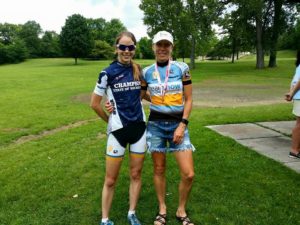 Race calendars and goals should not be set in stone
Race calendars and goals should not be set in stone
Although I had intended to be a multi-sport athlete this summer with a mix of mountain events and tris on my calendar, this had to be reconsidered after an IT band injury. It turned out GR Tri would be my first and only tri of the season as my running was sidelined for weeks following that race. However, this gave me the opportunity to focus on my cycling and I added Maple Hills Race for Wishes as well as the State Championship TT to my schedule. These both proved to be valuable experiences and the focus on cycling through the summer paid off in my fall mountain bike results.
Don’t let expectations limit performance
It is undeniably valuable to think through race scenarios, make game plans, and set goals. However, the reality of a race situation does not often match expectations and there are many factors more important than sticking to the game plan. My splits through the bike leg of the GR Tri were much faster than even my most ambitious projections and, with a lot of racing left, this made me nervous. However, the effort felt sustainable, my HR was reasonable, and I decided to disregard my speedometer and go for it. This paid off and I was able to hold the speed and take nine minutes off my bike split last year which set me up to win the race. This phenomenon happened again at the State Championship TT and I was less intimidated by the speed and took the opportunity to see what I was capable of.
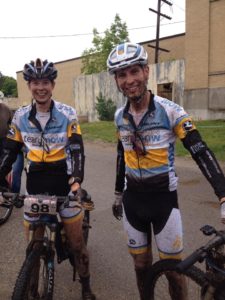 Be confident
Be confident
Training and racing is undeniably a game of confidence. Its presence or absence can be the determining factor of a breakthrough performance or a subpar race. I learned to manage my own fickle confidence by trying to avoid being intimidated my competitors’ training or previous race results. Although experience is valuable, each race is a new challenge and past success does not determine a race outcome. The race will be determined by who is the strongest and fastest on that day. Also, a huge component of maintaining confidence through a season is having a strong support system. I could not ask for more in this area with my family, Alex Vanias, Team OAM NOW, Athletic Mentors, and my community behind me.
…but not too confident
As I just mentioned, past success and results are never a guarantee of future performances. I went into every race this year expecting a battle, no matter what the field looked like on paper. This allowed me to be mentally prepared for the challenges of every race.
Remember why you are out there
Although we train to race fast, the time spent out there is hardly a means to an end. My summer was not just highlighted by race results, but by group rides with friends and teammates, getting to know a new community, exploring new trails and routes (and making my Strava heat map reflect it), and chasing Strava segments. If it is not fun, you’re not doing it right. I had a ton of fun this season and I am excited for the coming year of racing for Team OAM!
2015 Highlights
Mud, Sweat, and Beers-1st
Arcadia Grit and Gravel– 1st
Conquer the Village– 1st
Grand Rapids Tri– 1st (new 70.3 PR of 4:30)
Maple Hills Race for Wishes– 1st Cat 4
Hines Drive TT– 1st (25.4mph for 40k)
Ore to Shore– 1st
x50– 1st
Glacial Hills State Championship– 1st
Chequamegon 40– 2nd
Boyne Highlander– 1st
Michigan Mountain Mayhem– 1st
Peak2Peak– 1st
Iceman Pro Women– 5th
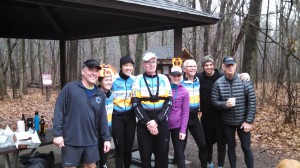 The Turkey Trot is a long-standing running tradition that began as far back as the early 1900s. I heard on the news over the Thanksgiving weekend that a turkey trot is now the most popular annual running event in the US with hundreds of thousands participating each year. Turkey trots are also known for benefitting local charities. Let me share with you a little turkey trot tradition I have.
The Turkey Trot is a long-standing running tradition that began as far back as the early 1900s. I heard on the news over the Thanksgiving weekend that a turkey trot is now the most popular annual running event in the US with hundreds of thousands participating each year. Turkey trots are also known for benefitting local charities. Let me share with you a little turkey trot tradition I have.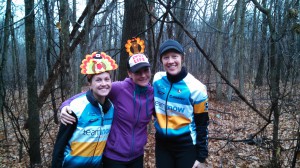 We do have an official podium ceremony, complete with turkey crowns for the 1st and 2nd place finishers. This year, new OAM NOW team member, Danielle Nye took the top turkey. I rounded out the top 3. Thanks to some course navigation errors made by some of the male competitors, the ladies swept the podium. Team members Jim Allan and Bob Schultz were also attending their 4th Bloody Knuckle.
We do have an official podium ceremony, complete with turkey crowns for the 1st and 2nd place finishers. This year, new OAM NOW team member, Danielle Nye took the top turkey. I rounded out the top 3. Thanks to some course navigation errors made by some of the male competitors, the ladies swept the podium. Team members Jim Allan and Bob Schultz were also attending their 4th Bloody Knuckle.





